17 U.S. Destinations Where Farmers Markets Feel Like Festivals
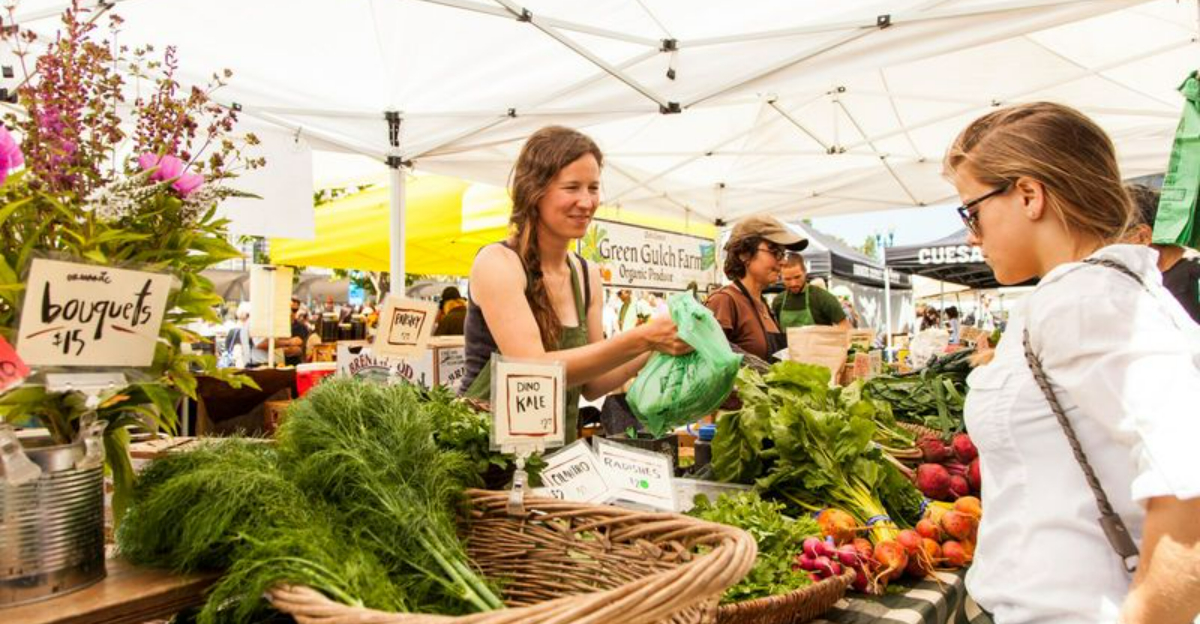
Farmers markets across America have transformed from simple grocery stops into full-blown community celebrations. They bring together local farmers, artisans, musicians, and food lovers in colorful, exciting gatherings that showcase regional flavors and traditions.
I’ve explored markets from coast to coast and found spots where shopping for fresh produce feels more like attending a party than running errands.
1. Portland Saturday Market (Oregon)

Rain or shine, Portland’s Saturday Market buzzes with energy every weekend. It’s the nation’s largest continuously operated outdoor market, running since 1974 along the Willamette River.
I love wandering through hundreds of vendor booths selling everything from farm-fresh berries to handcrafted jewelry while street performers entertain crowds nearby. The food court area features global cuisine that represents Portland’s diverse population.
Kids especially enjoy the interactive craft demonstrations where local artisans show how they make their wares. When you visit, make sure to catch the morning drum circle that kicks off market day with rhythmic beats echoing through the downtown waterfront.
2. Pike Place Market (Seattle, Washington)
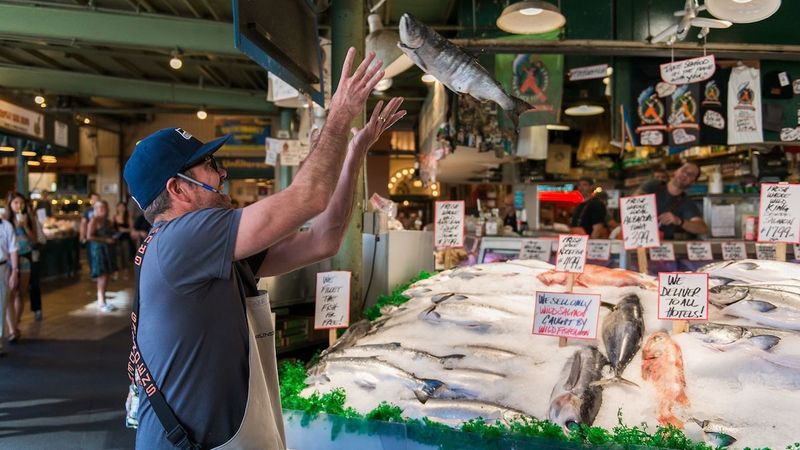
Have you seen those famous fish-throwing vendors? They’re just one part of what makes Pike Place Market magical. This Seattle landmark dates back to 1907 and stretches across nine acres of downtown.
Local farmers set up before dawn, arranging mountains of fresh produce alongside flower vendors creating stunning bouquets that brighten even the grayest Seattle day. The lower levels house quirky specialty shops selling everything from magic tricks to handmade pasta.
My favorite spot is the gum wall in Post Alley – gross but fascinating! The market’s energy peaks around lunchtime when food stalls serve clam chowder, fresh-baked pastries, and coffee from the original Starbucks located right at the market entrance.
3. Union Square Greenmarket (New York City)
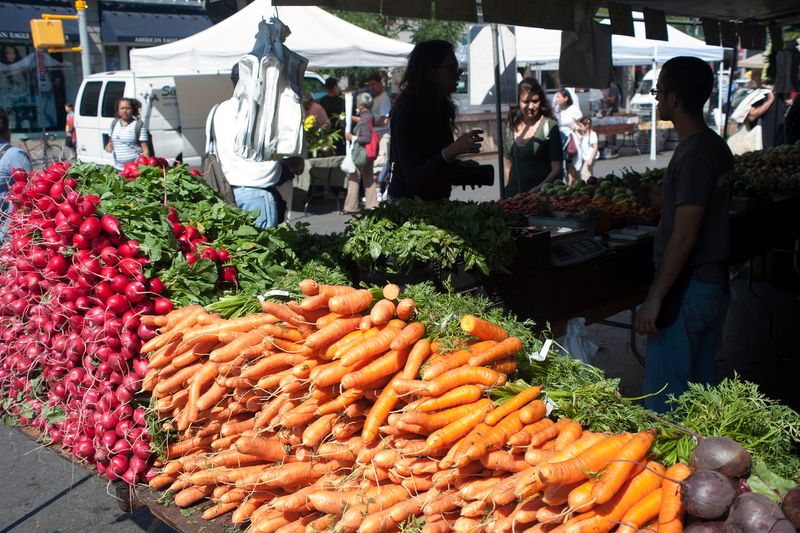
Between skyscrapers and busy streets, Union Square Greenmarket creates a patch of farm-fresh heaven in Manhattan. Four days a week, over 140 regional farmers, bakers, and fishers transform the concrete plaza into a food lover’s paradise.
Celebrity chefs often shop here alongside everyday New Yorkers, filling their bags with seasonal treasures. The market changes dramatically with the seasons – spring brings asparagus and ramps, summer explodes with tomatoes and berries, fall offers apples and squash, while winter features root vegetables and preserved goods.
What makes this market special? The cooking demonstrations that show exactly how to prepare unfamiliar vegetables, plus the compost collection program that helps urban dwellers reduce waste. The market’s location makes it perfect for people-watching while enjoying a fresh apple cider donut.
4. Ferry Plaza Farmers Market (San Francisco, California)
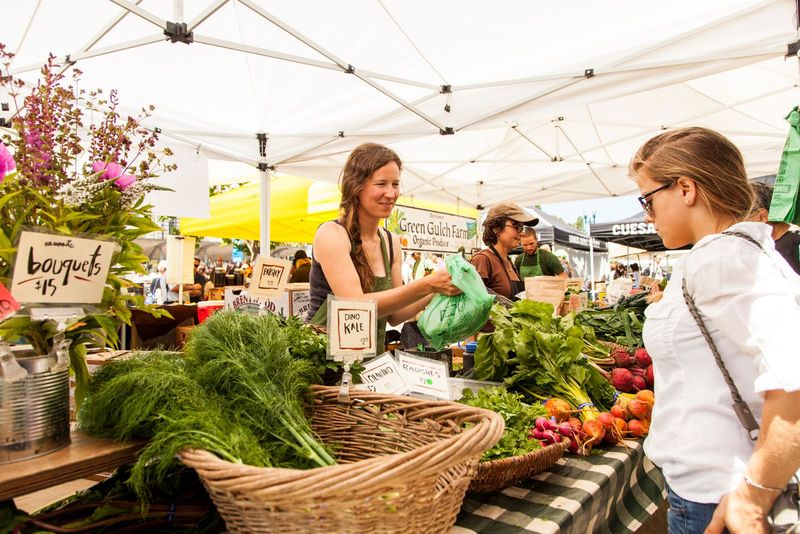
Perched along San Francisco Bay inside the historic Ferry Building, this market offers knockout views alongside knockout food. The Saturday market spreads outside along the Embarcadero, creating a food-focused street fair atmosphere.
Local chefs conduct cooking demonstrations using seasonal ingredients, while nearby vendors offer samples of everything from sourdough bread to small-batch honey. The market reflects California’s amazing agricultural diversity with over 100 varieties of just tomatoes during peak season!
If you’re hungry, grab breakfast at one of the prepared food stalls – the porchetta sandwich is my favorite – then eat while watching ferries come and go from the bay. The market’s commitment to sustainable farming practices makes it educational as well as delicious.
5. Santa Fe Farmers Market (New Mexico)

Located in the renovated Santa Fe Railyard, this market celebrates New Mexico’s unique food heritage against a backdrop of adobe buildings and distant mountains. The scent of roasting green chiles fills the air each fall, drawing crowds who buy burlap sacks full for freezing.
Native American vendors sell blue corn products and traditional breads beside Hispanic farmers offering chiles and quelites (wild spinach). The market strictly enforces a rule that everything must be grown within Santa Fe County, ensuring authentic local flavors.
Musicians playing traditional New Mexican music create a festive soundtrack while shoppers browse. Don’t miss trying biscochitos (anise cookies) or picking up some locally grown lavender products that thrive in the high desert climate. The Tuesday market is smaller but equally charming.
6. Charleston Farmers Market (South Carolina)

Southern hospitality shines at the Charleston Farmers Market in historic Marion Square. Palm trees sway above white tents where Lowcountry farmers display their harvests alongside craftspeople selling sweetgrass baskets – a regional art form dating back to slavery times.
The market captures Charleston’s unique blend of history and modern food culture. I always make a beeline for the benne wafers (sesame seed cookies) that reflect the area’s African culinary influences. Live bluegrass and jazz musicians set up throughout the market, creating different mood zones as you shop.
When you need a break, grab a sweet tea and people-watch from one of the park benches. The market runs April through November, with a special holiday market in December featuring handcrafted gifts perfect for Christmas shopping.
7. Dane County Farmers’ Market (Madison, Wisconsin)
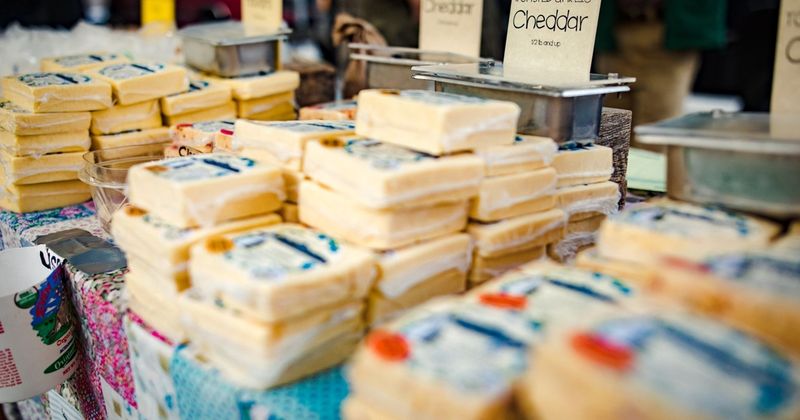
Circling the Wisconsin State Capitol building, this market claims to be the largest producer-only farmers market in the country. Saturday mornings transform the Capitol Square into a bustling social event where over 150 vendors create a colorful ring around the impressive domed building.
Wisconsin’s dairy heritage takes center stage with multiple cheese vendors offering samples of aged cheddars, fresh curds that squeak when you bite them, and specialty varieties made from goat and sheep milk. The market follows a strict “you must make it, bake it, or grow it” policy.
During peak summer season, shoppers follow a counterclockwise flow around the square, creating a friendly traffic pattern that locals call “doing the loop.” Spicy cheese bread from Stella’s Bakery often sells out early, so arrive when the market opens if you want to try this local favorite.
8. Boulder Farmers Market (Colorado)
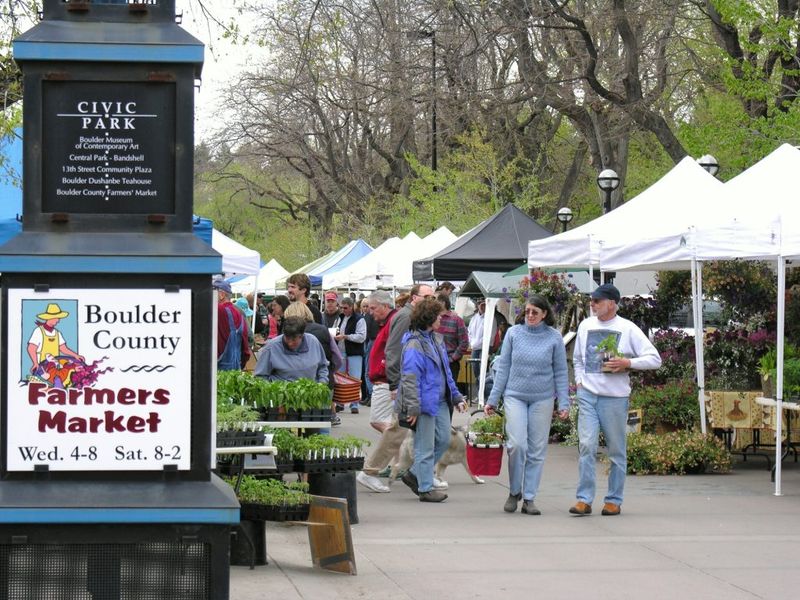
Nestled at the foothills of the Rocky Mountains, Boulder’s farmers market reflects the town’s health-conscious, outdoorsy culture. The stunning mountain backdrop makes shopping for organic produce feel like an adventure rather than a chore.
What sets this market apart? The zero-waste initiative that provides compostable utensils and encourages vendors to minimize packaging. I’m always impressed by the variety of mushrooms from local foragers who harvest from mountain forests, along with microgreens grown in urban gardens and honey from Boulder County hives.
After shopping, many visitors walk directly to nearby Boulder Creek with their fresh purchases for impromptu picnics. The market runs twice weekly from April through November, with a winter market once monthly during colder months. The Wednesday evening market includes a beer garden featuring local craft breweries.
9. Davis Farmers Market (California)
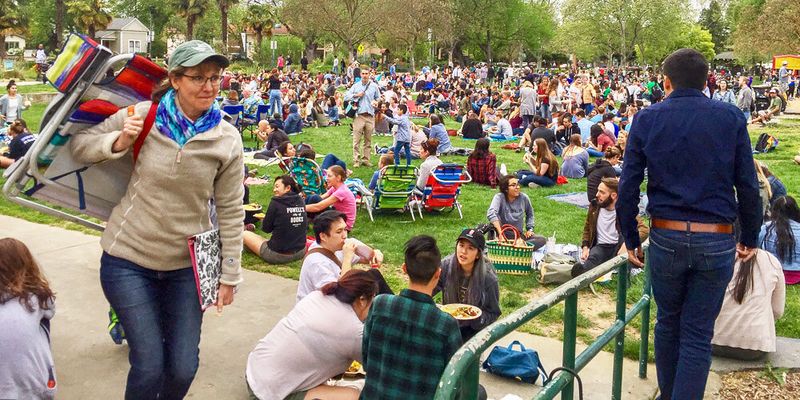
If farmers markets can have personality, Davis Farmers Market would be the friendly, laid-back professor who knows everything about food. Located in a university town, this market combines agricultural expertise with a relaxed, picnic-like atmosphere in Central Park.
The Wednesday evening “Picnic in the Park” transforms the regular market into a community party with live music, wine tasting, and ready-to-eat meals from food vendors. Families spread blankets on the grass while children play on the playground between trips to sample fresh peaches or strawberries.
UC Davis agricultural students often work at vendor booths, happy to explain sustainable farming practices they’re studying. The market runs year-round, showcasing California’s extended growing season with winter citrus following summer stone fruits. Their mascot, Dilly the Carrot, appears at special events to delight younger visitors.
10. Findlay Market (Cincinnati, Ohio)

History meets modern food culture at Ohio’s oldest continuously operated public market. Findlay Market occupies a beautifully restored 1852 iron-framed building in Cincinnati’s Over-the-Rhine neighborhood, with weekend farmers markets expanding into surrounding streets.
The market combines permanent food merchants inside the historic building with seasonal outdoor vendors. German heritage influences many offerings, from pretzels to wurst to sauerkraut, reflecting Cincinnati’s strong European immigrant history. The market hosts regular events like cooking classes and cultural celebrations.
During warmer months, the biergarten creates a perfect spot to enjoy local craft beers while listening to live music. I love watching the multi-generational family businesses where grandparents work alongside grandchildren, passing down recipes and techniques. The market operates year-round, serving as a community hub regardless of season.
11. St. Paul Farmers’ Market (Minnesota)
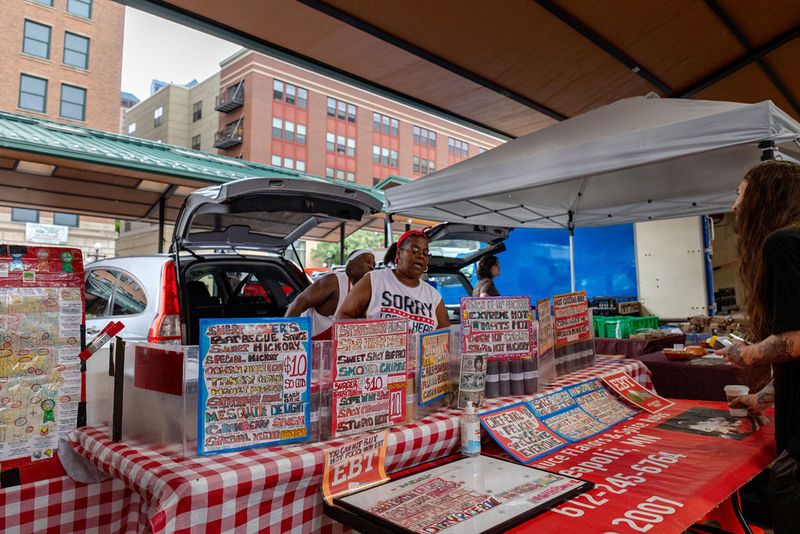
Despite Minnesota’s short growing season, St. Paul Farmers’ Market thrives with a strict local-only policy – everything must be grown within 50 miles of the city. This commitment to truly local food creates a genuine connection between urban shoppers and nearby rural producers.
The market operates year-round, moving indoors during brutal winter months when vendors sell root vegetables, preserved foods, and greenhouse-grown greens. Spring brings a celebration of ramps and asparagus that causes genuine excitement among regular shoppers who’ve waited through the long winter.
Hmong farmers make up a significant portion of vendors, bringing unique Asian vegetables and beautiful flower bouquets that reflect their agricultural heritage.
The downtown Lowertown location creates a perfect Saturday morning tradition: farmers market shopping followed by breakfast at one of the nearby restaurants that source ingredients from the same farmers.
12. Santa Monica Farmers Market (California)
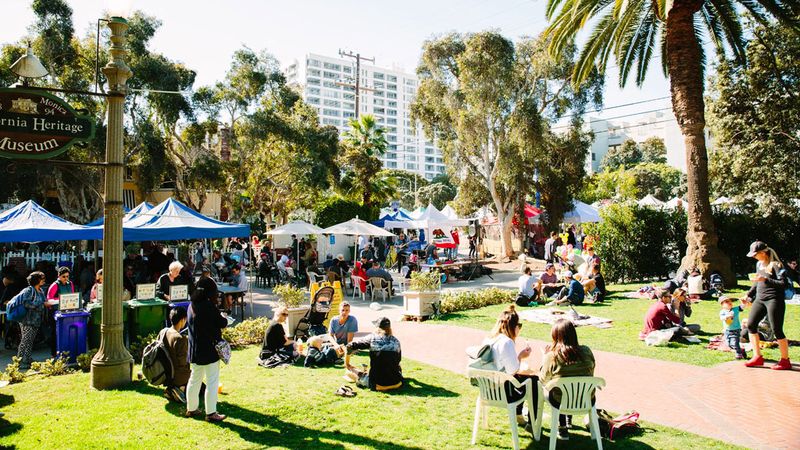
Celebrity chef spotting adds extra excitement to the already wonderful Santa Monica Farmers Market, where Los Angeles’ top restaurant chefs shop alongside home cooks. The Wednesday morning market has become famous in culinary circles for its exceptional quality and variety.
California’s extended growing season means you’ll find strawberries in December and over 20 varieties of avocados throughout the year. The market stretches across several blocks near the Third Street Promenade, creating a car-free zone where shoppers can focus on selecting perfect produce rather than watching traffic.
Many vendors offer samples, so come hungry! The coastal location means you can smell ocean breezes while shopping, and afterward, the beach is just blocks away. The market operates multiple days weekly, but Wednesday remains the largest and most chef-focused.
13. Crescent City Farmers Market (New Orleans, Louisiana)

Music and food dancing together perfectly describes New Orleans’ beloved Crescent City Farmers Market. Local brass bands often perform while shoppers browse stalls filled with Gulf seafood, Creole tomatoes, and Louisiana strawberries.
Cooking demonstrations focus on classic New Orleans dishes using seasonal ingredients, teaching visitors how to make authentic gumbo or jambalaya. The market operates at different locations throughout the week, each with its own distinct neighborhood vibe, from uptown to downtown.
What makes this market special? The incredible prepared food section where you can sample traditional dishes like crawfish étouffée or beignets made with market ingredients. Market organizers work hard to ensure SNAP benefits are accepted by vendors, making fresh food accessible to all community members.
When shopping here, you’re experiencing true New Orleans culture condensed into a few vibrant blocks.
14. Ithaca Farmers Market (New York)
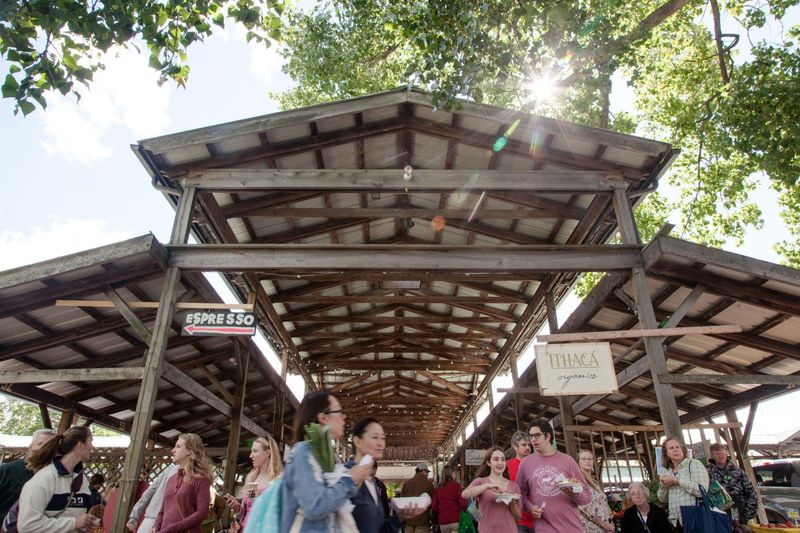
Housed in a stunning wooden pavilion on Cayuga Lake, Ithaca Farmers Market feels like stepping into a different world. The covered structure, built by local craftspeople, protects shoppers from Upstate New York’s unpredictable weather while providing gorgeous waterfront views.
The market reflects Ithaca’s diverse, progressive community with international food stalls serving everything from Cambodian cuisine to wood-fired pizza. Cornell University’s agricultural programs influence the market, with students and professors often selling experimental crop varieties alongside traditional farmers.
After shopping, many visitors enjoy their purchases at picnic tables overlooking the lake or take a short walk along the waterfront trail. The market operates three days weekly during peak season, with a special night market once monthly featuring live music and art vendors. Their “Local First” policy ensures all products come from within 30 miles.
15. Eastern Market (Washington, DC)

Politics takes a backseat to food at DC’s historic Eastern Market, where senators might stand in line behind you for fresh donuts on a Saturday morning. The red brick market building dates to 1873, creating a timeless backdrop for modern food shopping.
Inside the historic hall, permanent merchants sell meats, cheeses, and bakery items all week, while weekends bring outdoor farmers and artisans who transform surrounding streets into a festive bazaar. The market serves as a true community gathering place where Capitol Hill neighbors catch up while selecting their weekly produce.
Kids particularly enjoy the street performers and chalk artists who add entertainment value to the shopping experience. After a devastating fire in 2007, the community rallied to rebuild, showing how central the market is to DC’s identity. Don’t miss the blueberry pancakes at Market Lunch, famous throughout the district.
16. Green City Market (Chicago, Illinois)
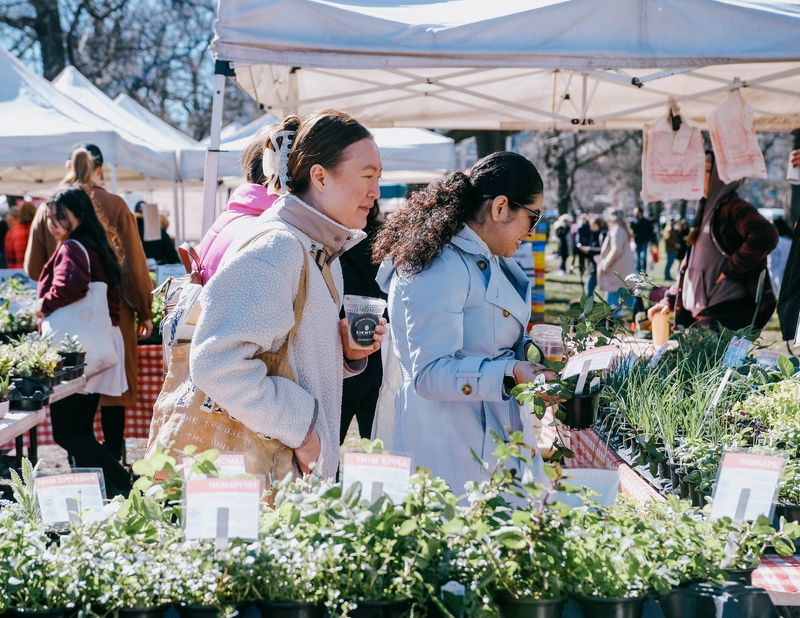
Chicago’s notorious winters don’t stop Green City Market, which moves indoors during colder months so shoppers can access local food year-round. The market’s Lincoln Park location creates a beautiful contrast between urban skyline and farm-fresh produce.
What makes this market special? The chef demonstrations featuring top Chicago culinary talents who show exactly how to prepare seasonal ingredients. The market maintains strict standards for vendors, requiring sustainable and organic practices, creating a shopping experience where customers can trust everything meets high environmental standards.
The “Edible Gardens” program teaches city kids about growing food through hands-on activities. Meanwhile, the market’s unique “Club Sprouts” program encourages children to try new vegetables through tastings and passport stamps. During summer, Wednesday and Saturday markets operate outdoors, while winter brings a scaled-down but equally wonderful indoor version.
17. Hilo Farmers Market (Hawaii)
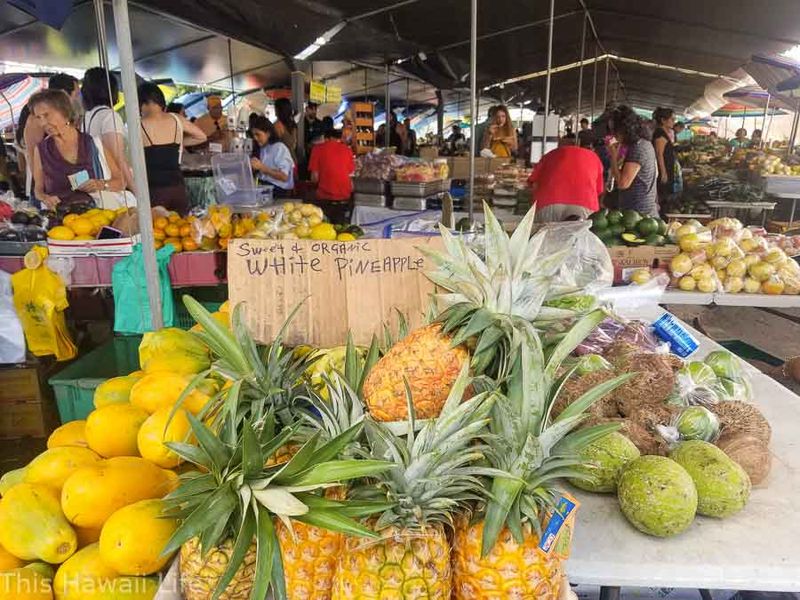
Tropical fruits you’ve never seen before make Hilo Farmers Market a feast for the senses. Located on Hawaii’s Big Island, this colorful market showcases the island’s incredible growing conditions with exotic offerings like rambutan, star apple, and dozens of avocado varieties.
More than just produce, the market features traditional Hawaiian crafts, flower lei makers stringing blossoms as you watch, and prepared foods representing the island’s diverse cultural influences. Wednesday and Saturday bring the full market with over 200 vendors, while a smaller daily market operates year-round.
The open-air setting lets trade winds keep shoppers cool while they browse under tents for protection from frequent rain showers – called “blessings” by locals. Many vendors are small family farms, happy to explain how to eat unfamiliar fruits or use traditional Hawaiian ingredients.
The nearby ocean provides a stunning backdrop for this truly unique market experience.
